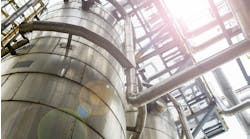Building renewable fuel plants in the United States is a technologically and financially sound investment. These plants not only contribute to carbon emissions reductions but also align with the country's goal of energy sustainability. By leveraging sustainable feedstock sources, strategic partnerships, advanced technologies and government incentives, these plants offer a pathway to a greener and more economically robust future.
Recently, I managed a financial due diligence project for a renewable fuels plant. This plant will transform any renewable feedstock — such as corn oil, soy oil, used cooking oil and even tallow — into renewable diesel or sustainable aviation fuel (SAF). Renewable fuels have emerged as a potential solution to reduce greenhouse gas emissions and mitigate climate change due to investments in greenfield renewable fuels plants in an era of environmental consciousness and the ongoing quest for energy sustainability. Renewable diesel and SAF have received considerable attention due to their potential to significantly cut carbon emissions in the transportation sector.
Renewable Diesel
Often referred to as green diesel or hydrotreated vegetable oil, renewable diesel is a clean-burning alternative to conventional diesel fuel. The technological and financial advantages of establishing renewable diesel plants include:
Outlook is bright for the construction of renewable fuels plants.
- Reduced carbon footprint. Renewable diesel can reduce carbon emissions by up to 85% compared to traditional diesel. With the increasing focus on reducing GHG emissions and meeting strict environmental regulations, renewable diesel offers an immediate and effective solution.
- Feedstock availability. The United States has abundant sources of feedstock, including soybean oil, canola oil, and used cooking oil, making it a prime location for renewable diesel production. Leveraging these resources can reduce production costs and enhance the domestic economy.
- Job creation. Building and operating renewable diesel plants creates job opportunities in construction, operations and maintenance. These plants also stimulate local economies by purchasing feedstock from nearby sources.
- Energy security. Decreasing dependence on fossil fuels enhances national energy security. Renewable diesel production can help reduce the country's reliance on oil supply, making the United States less susceptible to price fluctuations in the global oil market.
- Government incentives. The construction and operation of renewable fuel plants can benefit from substantial subsidies, grants and tax credits from the U.S. Inflation Reduction Act (see, “Take Advantage of the IRA.”).
Sustainable Aviation Fuel
With SAF, one can think of a clearer sky ahead. SAF is a renewable alternative to conventional jet fuel, specifically designed to reduce greenhouse gas emissions from aviation. The adoption of SAF is crucial for the aviation industry to meet its sustainability goals, and building SAF plants presents several additional advantages:
- Reduced emissions. SAF can reduce carbon emissions in aviation by up to 80% compared to traditional jet fuel. As the aviation sector faces increasing scrutiny to reduce its environmental impact, SAF production offers a promising solution.
- Growing aviation industry. The United States has one of the world's largest aviation industries, and it is poised for growth. Investing in domestic SAF production not only aligns with global aviation sustainability goals but also ensures a stable supply for the growing industry.
- Strategic partnerships. Collaboration with airlines, airports and aircraft manufacturers can lead to long-term contracts and partnerships, ensuring a stable market for SAF producers. Such agreements can provide a predictable revenue stream and reduce financial risks.
- Government incentives. The U.S. government has shown support for SAF production through tax incentives and grants under the IRA. These financial incentives can significantly reduce the initial investment and operational costs of SAF plants.
Technology Plays a Role
The success of renewable diesel and SAF production hinges on technological advancements. State-of-the-art hydrotreating and hydrocracking technologies are essential for efficiently converting feedstocks into renewable diesel and SAF. Continuous research and development efforts lead to more efficient and cost-effective processes. Developing technology that allows for the use of a wide range of feedstocks is crucial. This flexibility ensures a stable production process even when specific feedstocks are limited. Currently, technology allows for the feed pretreatment of any sustainable feedstock to ensure the final products meet all fuel specifications.
Steam methane reformers (SMR) are usually needed as hydrotreating the feedstock requires a significant amount of hydrogen. Installing carbon capture and utilization (CCU) technologies on SMR plants and integrating CCU technologies into renewable diesel and SAF plants can make these plants more environmentally friendly if they capture carbon emissions and sequester CO2 or convert the CO2 into valuable products.
One of the advantages of building a greenfield renewable fuels plant is the opportunity to design these plants with the highest level of energy efficiency. Optimizing energy usage within these plants is essential for cost-effectiveness. Innovative energy recovery systems and process improvements can enhance overall operating expenses.
Outlook is bright for the construction of renewable fuels plants. The demand for renewable diesel and SAF is expected to grow significantly in the coming years, driven by environmental regulations and sustainability initiatives. Establishing production facilities now positions companies to capitalize on this expanding market. The premium on SAF and renewable diesel combined with the government’s tax credits is significant and makes these plants an attractive investment. Long-term contracts with airlines and other end users can provide a reliable source of revenue, reducing the financial risks associated with market fluctuations.



